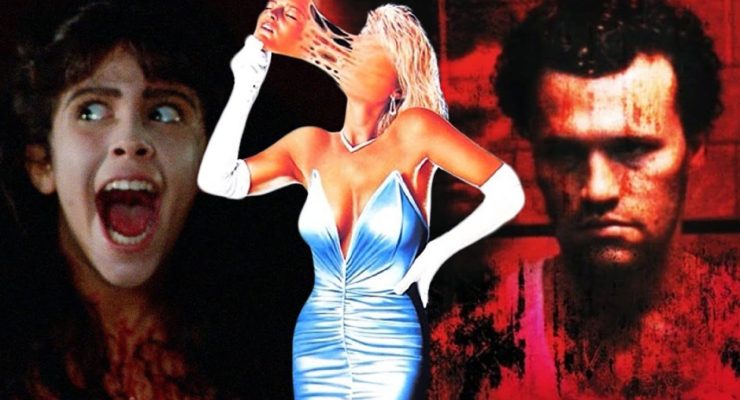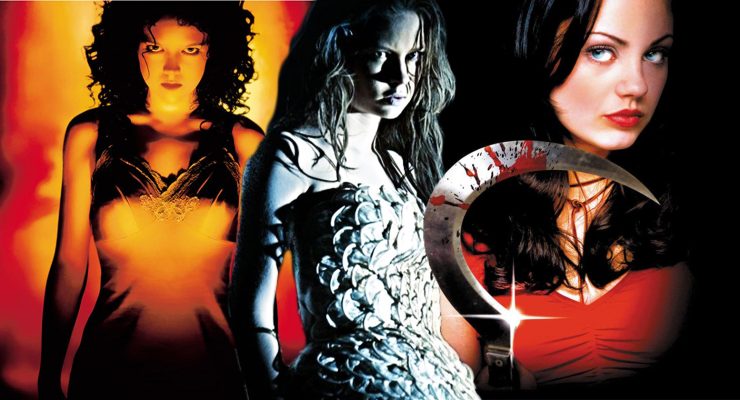VFX Supervisor Paul Santagada has worked on Game of Thrones, The Vampire Diaries and Ironside to name a few. His film work includes both the underrated Fright Night and Vin Diesel’s never ending franchise train Riddick. He recently took time out to talk Ratched with Martin Carr and how he brought that to life…
What first got you interested in VFX?
I started early with an interest in photography in middle and high school. Wish I could say that I knew this was all I ever wanted to do but I grew up in upstate New York, never really considered film or television as a viable career path. Just didn’t have the model. Eventually I got really into Photoshop and goofing around with early digital cameras. That spiral of the technology, supporting the art, pushing the technology held my interest like nothing else. By the time I was in college I took a lot of those principals to moving footage, inspired by a lot of my friends who were in film and TV programs at the time. It was all still a hobby though. I lucked into an apprenticeship/internship of sorts on a project in New York that was flexible enough to fill in the hours around my day job at the time. By then I was fully invested, and figured it was time to move to Los Angeles and make a go of it.
When you first became in involved with Ratched what did those initial creative conversations center on from a VFX perspective?
The initial creative conversations were mostly concerned with augmenting the amazing practical work. For example, augmenting a beautiful landscape with steaming geothermal pools, or making some clandestine medical procedure a bit more gross or dangerous than what we were able to capture safely on the day. Most often the initial conversations concern mood, color, feeling, and style, with the specifics worked out once the departments start getting the script pages.

What research did you do to ensure the VFX around those medical procedures was accurate?
The production worked closely with a medical advisor, a doctor who was also an expert on antiquated techniques at psychiatric hospitals of the time. We took stock of all the practical implements we were using, and in some cases recreated parts of them as visual effects. In other cases, once in post-production, we consulted anatomy manuals or accounts of the influence of certain drugs and medications. There’s always a fine line to draw between accuracy and stylization, and all the departments did fantastic work in that regard.
Were there any elements from the original film that influenced VFX on Ratched?
There are seeds and inspiration from the original book and film, but Ratched is its own thing. Some settings and some of the practices may feel familiar to those that pay close attention, but this is a singularly lush and menacing vision of Northern California following the Second World War.
Considering the time period and subject matter, how important was it to have a strong stomach on this project?
Most of the time it wasn’t an issue. The show explores how various strong motivations can yield to different flavors of evil, so sometimes it gets pretty dark and gruesome. Being on-set for some of the gnarlier work puts you at a bit of a remove, the act of design and preparation makes everything feel a little clinical. Once you get in to post though, where everything gets pushed to extremes, it’s easier to get a bit squeamish. We made a point to check in on the artists and other members of the team that were working on some of the more disturbing material every day, and give them a break as needed. Hope the final result yields some shocks to the system, heh.
Which scene or scenes presented the biggest challenges in terms of VFX?
I’ll talk about a few different flavors of challenge. The first is really nailing a clear, articulated vision. For the beach scene featured in the trailer, for instance, we had a piece of concept art that we stuck to through pre-production to the final image. It’s beneficial to have that guiding piece of work as a goal, but there isn’t a lot of wiggle room or a place to hide. It’s really bulls-eye or nothing.
Other scenes don’t have that kind of clarity, like if the feeling or timing of a scene is more performance-driven. There’s a harrowing scene in the middle of the series where a story is being told in flashback. To really dial in the rhythms of that piece of work, there were a number of adjustments to make the story really pop. Staying flexible was really the challenge there.
And then there are the times where you just have to make something work despite the realities of production. For instance, due to a change in schedule late in the show, there was a scene that had to take place with a challenging sun position. A lot of rigging had to be put in place, to shape the light, and because of the location, it couldn’t really be hidden from the scene. The team was able to stay agile and rebuild a lot of that location, surrounding trees, everything. And it looked great.

Looking at the industry post COVID, how important do you think VFX will prove to be going forward?
There are aspects of visual effects that have always been about extending filmmaking beyond what could be captured safely and practically. Productions will continue to strive to work within these new bounds of safety, and visual effects will be there to help tell the rest of the story. This industry, especially television production, has always been about creative problem-solving under challenging circumstances, and the pandemic is another extension of that.
What are your key considerations that you weigh up before signing on to any project?
There have always been exceptions, but big, marketable media had been telling the same sorts of stories for a really long time. I’m so glad that’s changing, and I jump at any opportunity to contribute to a shift to a more diverse, and often more interesting, set of voices and narratives.
Looking ahead towards 2021 and beyond are there any new projects you are in a position to discuss right now?
Schedules are all up in the air. We’re still all trying to figure out how production will work this fall, let alone next year. But in the larger sense, I’ve been really impressed at how well we’ve shifted to more remote operations. Maybe we’ll see some new kinds of production, more animation maybe, who knows? I’m confident stories will continue to find a way into the world.
Describe for me your perfect Sunday afternoon.
I really, really miss going to theatres. Who knows when we’ll be able to get back to that. At this point a just perfect Sunday afternoon would be a double feature of some monster movie first, walk to lunch, then back in for something more reserved and poetic… Taiwanese New Wave, maybe? A genre largely concerned with loneliness and urban isolation, but at least we could go and enjoy it in the company of other strangers, all feeling the same thing, together.
Thank you for taking the time to talk to Flickering Myth today and take care.
Ratched is streaming now on Netflix. Read our review here.
Martin Carr














